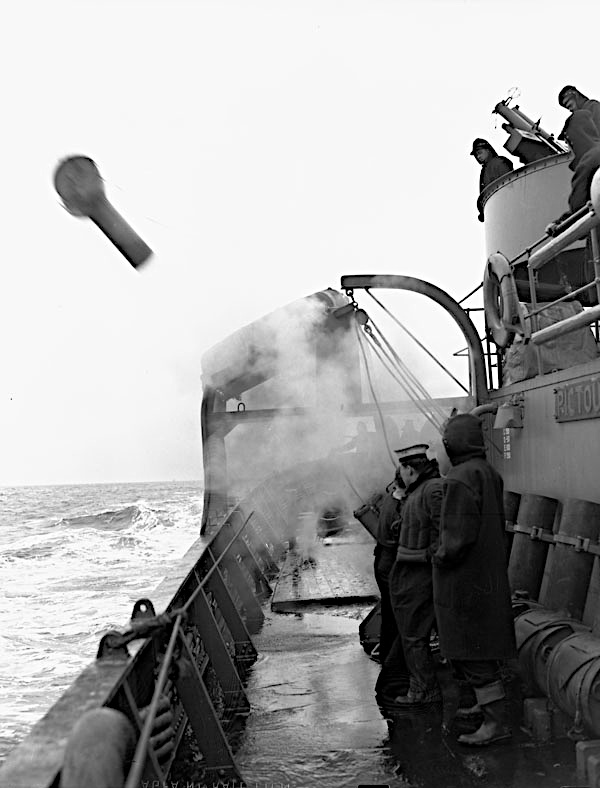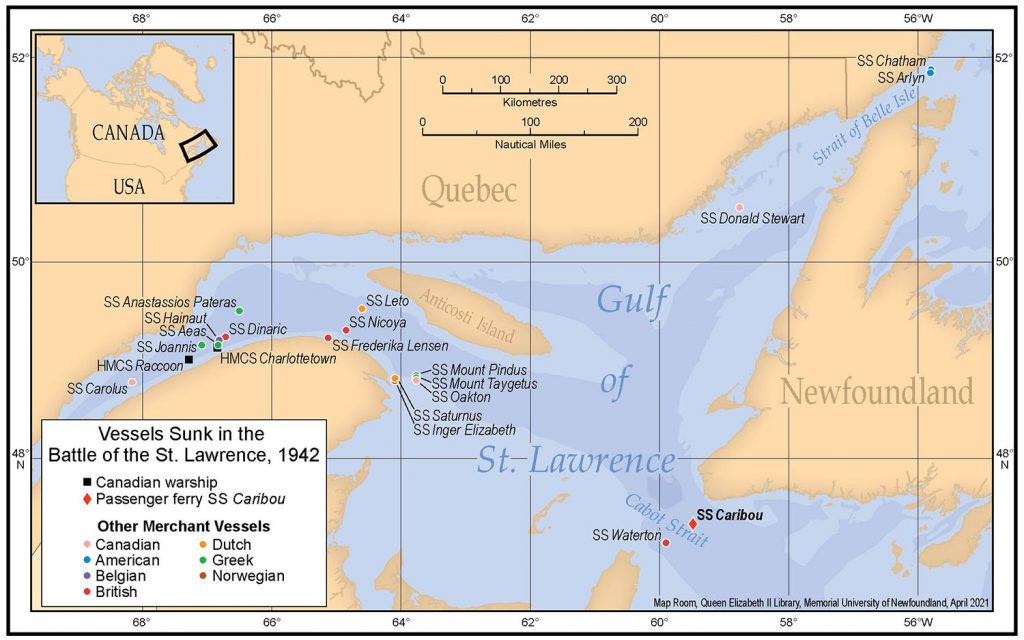The Battle of the St. Lawrence: a U-boat success story
“The crew’s got a bad feeling about tonight,” Caribou crewman Israel Sheaves told his daughter-in-law that Tuesday evening. Mary heeded his warning and stayed ashore in Cape Breton with relatives, instead of boarding the ferry.
Watch the video German U-boat sinks S.S. Caribou with transcript.
The sailors of S.S. Caribou were tense, since the cargo ship S.S. Waterton had been torpedoed in the Cabot Strait just two days before. While Waterton’s crew were all rescued by their Navy escort, the attacking U-boat escaped. That same evening, the night crossing of S.S. Caribou and S.S. Burgeo was punctuated by exploding depth charges dropped by their naval escort all the way across the Cabot Strait.
Canadian and Newfoundland sailors feared the German U-boats that were hunting in the North Atlantic. From mid-May to mid-October 1942, six U-boats had sunk 20 Allied ships in the St. Lawrence River and Gulf —without losing any submarines. Those attacks were part of the German Navy’s Operation Drumbeat (Paukenschlag), which targeted all shipping along the North American coast in 1942. Germany hoped to disrupt Britain’s supply chain and divert Allied warships away from protecting the trans-Atlantic convoys. This made things worse for the Royal Canadian Navy, which did not have enough warships to adequately protect shipping along the Atlantic coast.
The majority of U-boat victims were merchant vessels, but the strike on S.S. Caribou was exceptional. The torpedo that killed Israel Sheaves and sank the ferry also killed the most people in one attack in the Battle of the St. Lawrence.



